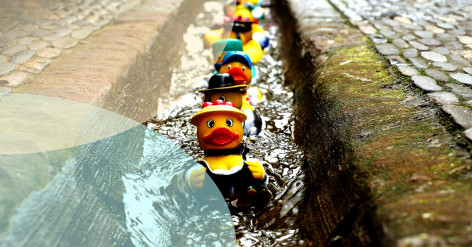DIY Guide: Repairing Common Plumbing Issues

Section 1: The Saga of the Dripping Faucet

Does the sound of a dripping faucet keep you up at night? Do you groan in frustration every time your toilet won't flush correctly? Well, guess what? You are not alone! Plumbing issues are a common occurrence in most households, often causing unnecessary stress. This comprehensive DIY guide will set you on the path to repairing these everyday bugs, saving both time and money.
Step-by-Step Guide to Fixing a Leaky Faucet
There's nothing more annoying than the ceaseless 'drip-drip' of a faulty faucet. But fear not - we can fix this.
Section 2: The Tale of the Clogged Drain
Step 1: Identify your Faucet Type There are four types of faucets - compression, cartridge, disc, and ball https://www.thisoldhouse.com/plumbing/21014956/faucet-types. Identification is the first step to a successful repair.
Step 2: Gather Necessary Tools Most basic faucet repairs require adjustable wrenches, screwdrivers, replacement parts, and a dose of patience.
Step 3: Repair Process Once you identify your faucet's type and gather the equipment, it's time to fix that pesky leak. Check out the detailed procedure described in https://www.familyhandyman.com/project/how-to-repair-a-kitchen-faucet for more information.
Related articles
Kick the Clog: How to Unblock Drains
A clogged drain can disrupt your daily routine causing mini water backups anytime you try to use the sink or shower.
Section 3: The Ballad of the Running Toilet
Step 1: Clean the Stopper or Strainer Pop-up stoppers in sinks and strainers in showers often gather hair, soap, and other particles leading to blockage.
Step 2: Manual Cleaning Using a plunger can dislodge the stubborn clog if cleaning the stopper or strainer does not help.
Step 3: Chemical Solutions If manual cleaning doesn't resolve the issue, chemical drain cleaners can do the trick. However, be sure to use them sparingly to avoid damaging your pipes.
Running Toilet: Catch it if You Can
The constant movement of water in your toilet tank when it's not in use can be a wasteful nuisance.
Step 1: Understand your Toilet's Mechanism Most toilets have similar mechanisms. Knowledge of the toilet anatomy can help you troubleshoot issues quicker.
Step 2: Identify the Cause The issue can usually be traced to a faulty flapper, fill valve or overflow tube. Once you pin down the source of the issue, half your battle is won.
Step3: Repair the Toilet Repair kits are readily available for common toilet issues. Following the instructions carefully should lead to a successful repair.
Home repairs, particularly plumbing, can seem intimidating. But with the right tools, plentiful resources, and a sprinkling of DIY spirit, you can conquer common plumbing issues with ease. Here's to never having to pay extravagant fees for minor plumbing issues again!





